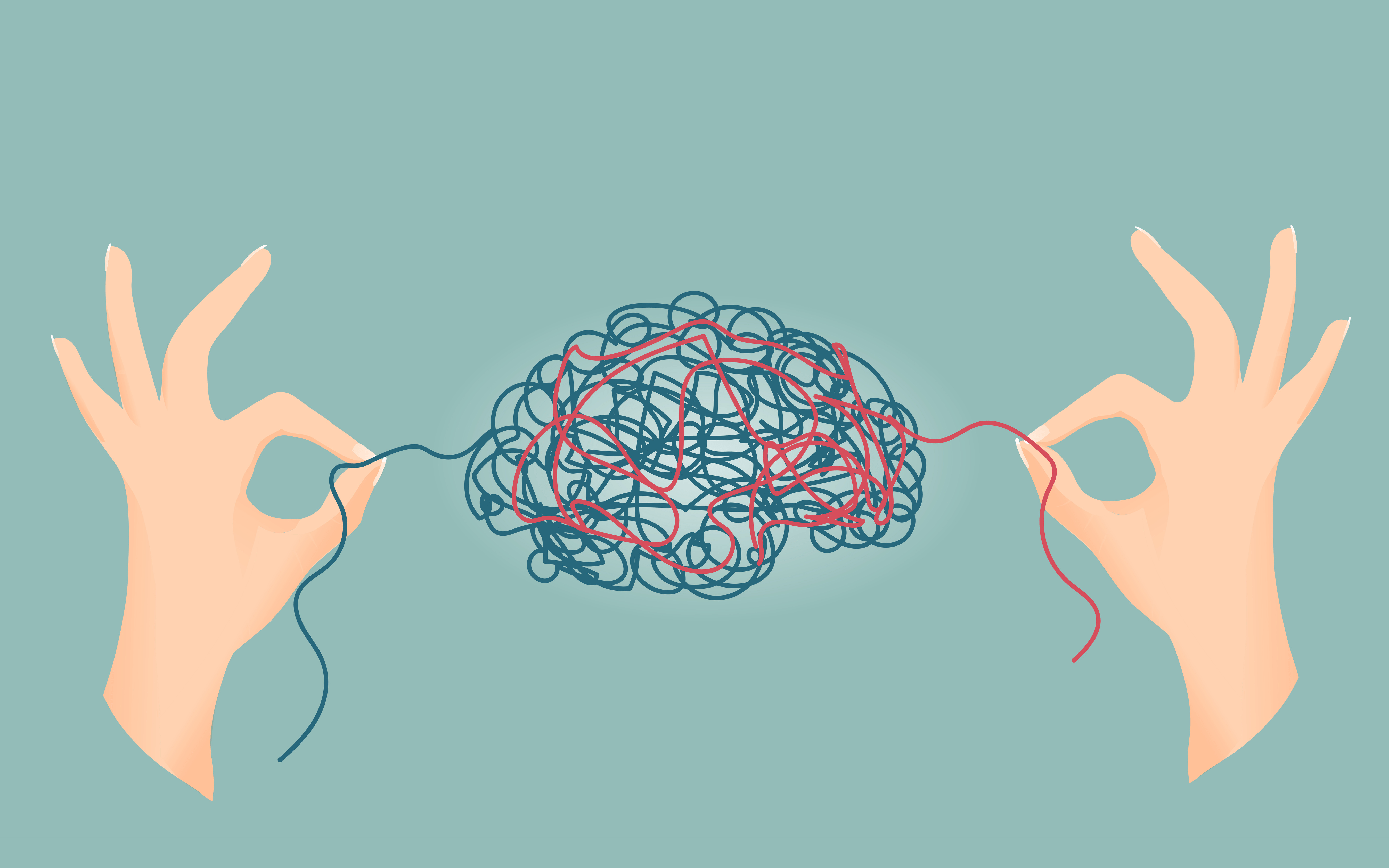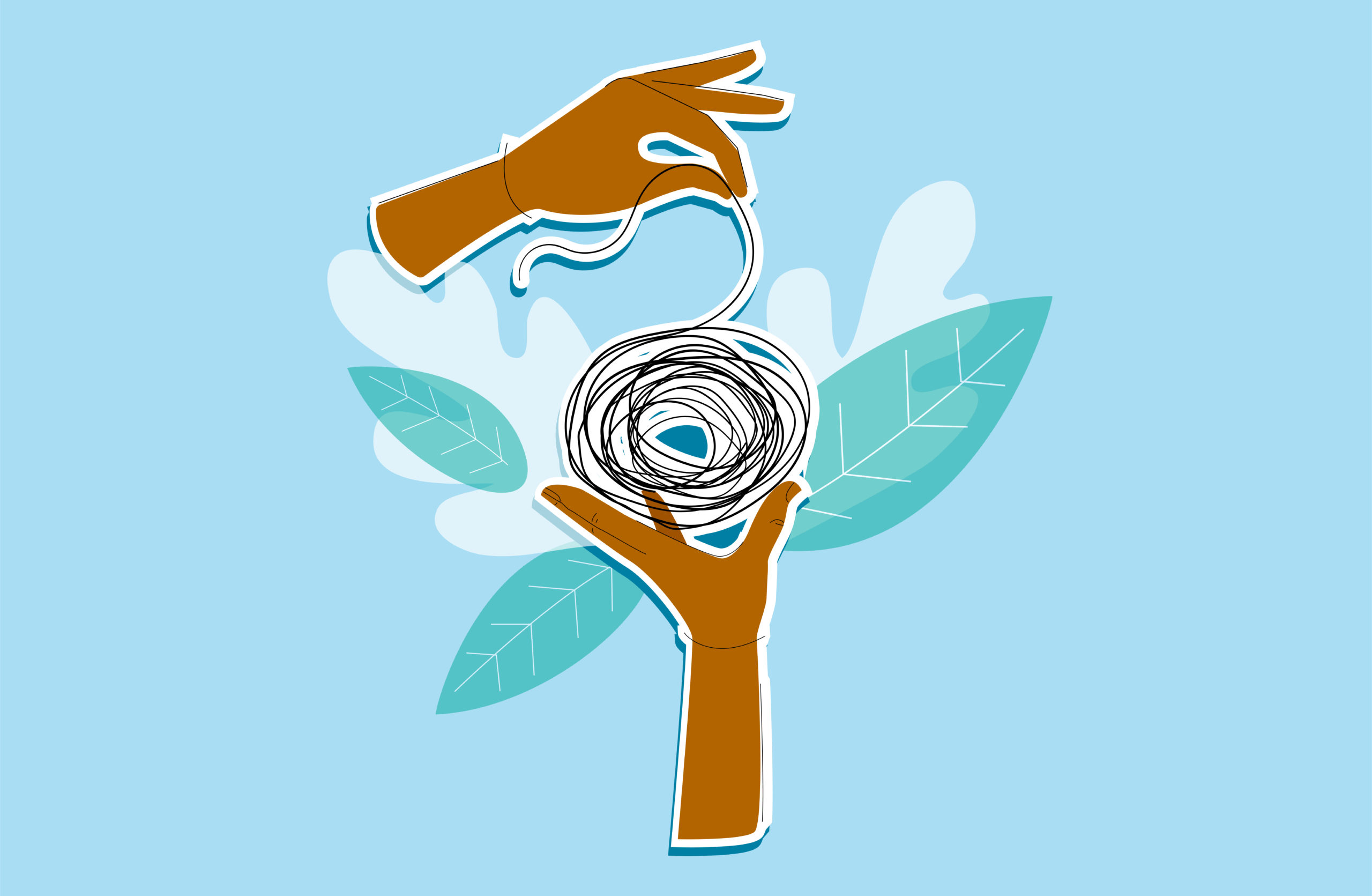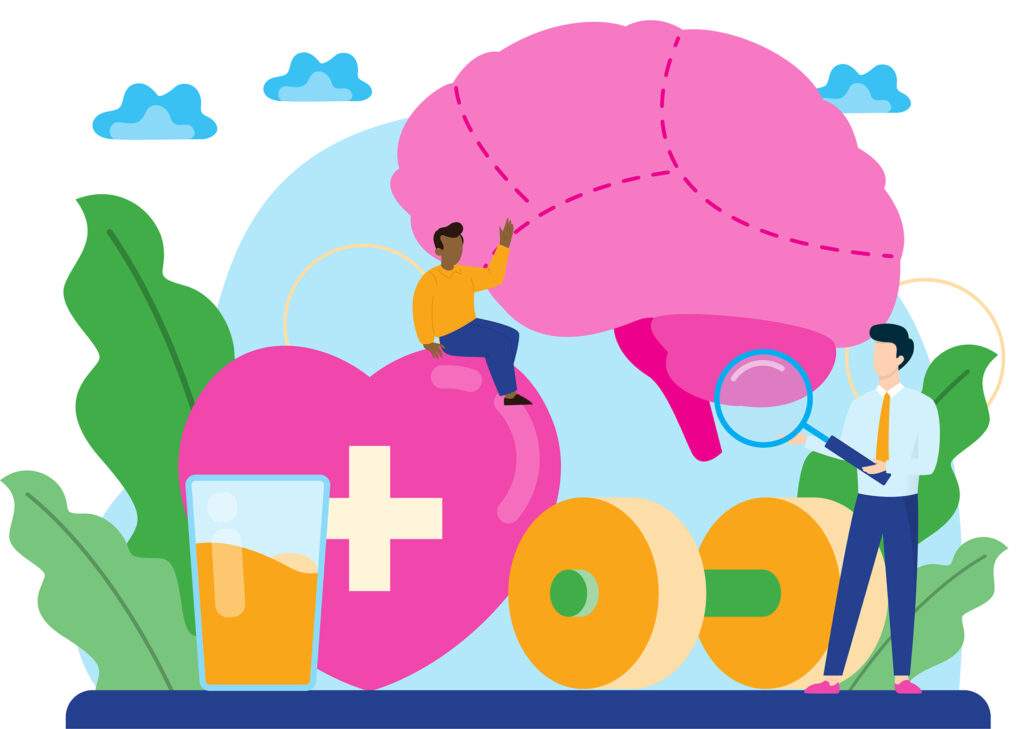
Ever wonder how you developed a habit of buying tools or kitchen gadgets you don’t need? Why do you check your phone yet again when you just checked it 15 minutes ago? Or root around in the kitchen late at night, not really hungry but just wanting something?
No mystery. It’s simply how our brains work. We crave. We get. We remember. We crave again. It’s the craving cycle. If we can understand it, we have a better chance of catching it in the act, and taking steps to make more considered choices.

What Are Habits?
Habits are behaviors that become automatic because they have been performed frequently in the past. This repetition or automaticity creates a mental association between a situation and action or behavior.
What is a Habit Loop?
Habits are formed and strengthened as we journey through a continuous loop seeking to satisfy our urges. Habit loops have a pretty simple and consistent formula: there’s a trigger; there’s an accompanying behavior; and there’s a result or reward. Mindful awareness is a form of curiosity that can act like a wedge to break the habit loop at various points and open up the opportunity for fresh choices.
For example, let’s look at habits that get formed around smoking cigarettes: There could be stress (trigger) that moves someone to go outside for a cigarette (behavior); and then, for a brief time, that initial stress is reduced (reward). Our brains simply recognize that a particular behavior—in this case, smoking—alleviates, however briefly, the feeling that the initial trigger sparks in us. So with that reward of lowered stress, the brain says, essentially: go do that behavior again.
The trouble is, smoking a cigarette does not fix the root of the problem. That smoker still has to go back in to face an unruly classroom, an angry boss, or a looming deadline. What does get reinforced is the behavior—and all it takes is that little bit of stress relief to keep us going back to the perceived stress reliever, in this case, the cigarette.
We can learn to raise our awareness of our own habit loops and get more adept at observing their mechanics. It’s helpful to think in terms of gears: Being in habit mode is like being on autopilot—we go through our day, habitually reacting to whatever stimuli we encounter. First gear is recognizing what our habits are.
How Does a Habit Form?
1. Our brain takes in data through our five senses or a thought. For example, you look at a selfie you took at the Eiffel Tower.
2. Based on similar experiences—and because we see the world through glasses we’ve manufactured—our brain interprets this as pleasant or unpleasant.
3. If pleasant, our brain gets an itch or an urge: “Get me some more of that!” If it’s unpleasant, our brain says, “Get this away from me!”
4. We do something to make the good stick around, or to make the bad go away. For example, we post the picture on Facebook, and we get a bunch of Likes and comments about it.
5. If our behavior was successful, our brain lays down a memory so it will remember to do that again in the future. Our brain says, “That was great. Don’t forget to take more pictures and post them when you’re on exotic trips!”
6. This new memory feeds back to Step 2 to inform how we view the world—by solidifying how we saw it previously, or if there is new information, by updating: tweaking the prescription for our mental glasses.
Each time we go through this, neural circuits that associate the experience with pleasant or unpleasant strengthen. This reward-based learning process is called positive and negative reinforcement and another example goes like this: We see some food that looks good, our brain says, “Calories! Survival!” We eat the food: We taste it, it tastes good. Especially with sugar, our bodies send the signal to our brain that says: “Remember what you’re eating and where you found it.” We lay down this context-dependent memory and learn to repeat the process next time: see food, eat food, feel good. Repeat.
Trigger, behavior, reward.
Simple, right? Well, after a while our creative brains say, “You know what? You can use this for more than just remembering where food is. Next time you feel bad, why don’t you try eating something good so you’ll feel better?” We thank our brains for the great idea, try this, and quickly learn that if we eat chocolate or ice cream when we’re mad or sad, we feel better. Same process, just a different trigger. Instead of a hunger signal coming from our stomach, this emotional signal—feeling sad—triggers the urge to eat. Each time we do this, we learn to repeat the process and it becomes a habit.
The Main Types of Habits
There are four main categories of habits—habits of wanting; habits of distraction; habits of resistance; and habits of doing—that encompass many of the most common behaviors we seek to change.
1) Habits of Wanting
Habits of wanting, craving, or addiction have an energy and feeling tone of moving toward something we desire. The body and mind focus in on the object, be it a drink, drugs, food, cigarettes, or sex, or any other object of desire, and our sense of well-being and happiness becomes tied to getting what we crave. Working mindfully with habits of wanting means opening fully to the feeling of wanting as it manifests—in the body, the emotions, and the mind. If something triggers the urge, you can open to the sensations, feelings, and emotions and say “yes” to them and meet them with kindness, interest, and acceptance. If a thought arises, such as, I’ll feel better if I have a smoke/drink, meet that thought with kindness. Choose to stay with what’s alive in the body and the emotions without acting on it. When you learn to stay with the uncomfortable, unpleasant, or difficult feelings, you weaken the hold that the craving has over you.
2) Habits of Distraction
If you become aware that your attention has moved into an unhealthy habit of distraction, such as spacing out watching TV or surfing the Internet—or if you catch yourself before moving into it—bring close attention to your bodily experience and emotions. Stay with these sensations and feelings, then bring to mind the question: What would I have to experience if I didn’t turn toward my habitual behavior? You may locate a feeling of tightness or numbness, perhaps a restless feeling. Meet the experience with a kind, curious, and accepting attention. See how, when met in this way, the feeling will come and go in its own time.
3) Habits of Resistance
Habits of resisting, which manifest as frustration, annoyance, impatience, anger, judgment, and similar emotions and mind states, tend to have a different feeling tone. We feel as if we’re defending ourselves, resisting a threat, or protecting ourselves from something that will harm us. Often we’ll feel tightness, tension, contraction, agitation, heat, or other fight-or-flight sensations. The accompanying thoughts or beliefs in our mind may urge us to act in a way that will change this unpleasant situation or experience.
We can meet the habits of resistance by bringing our attention back to “what am I experiencing right now?” then meet what is here with a kind, curious, and accepting awareness. Bringing awareness to your breath helps to ease feelings of tightness and tension. Putting your hand on your heart can help temper thoughts of “I need to do something.” Sending a wish of peace and well-being to yourself, perhaps whispering “may I be peaceful,” can create a sense of inner space within which the difficult experience and sensations can be held. Here, too, the practice is to bring a kind, curious, and accepting attitude to what is present—choosing to stay with your direct experience rather than moving into habitual behavior.
4) Habits of Doing
Finally, we can respond to habits of doing—the feeling that we’re always on our way somewhere, feeling that something bad will happen if we don’t keep moving and getting things done—with the same attitude of kind and accepting awareness. We begin by coming back to what we are feeling now, physically, emotionally, mentally. We think, things might be OK if I can just accomplish the next task. We can feel frenetic, agitated, intense, or stressed out. Mindfulness invites us to experience all the sensations and emotions associated with that energy without identifying with it. Mindfulness practice helps prevent us from getting swept up in the story of “I need to get this done or things will fall apart.”
These four kinds of habits are not mutually exclusive. When we feel a craving for something that we think will make us feel good, such as eating something sweet, we are often, at the same time, wanting to avoid an unpleasant feeling—for example, tension, worry, tightness, or numbness. Similarly, when we disconnect from the present and spend large amounts of time online, there is often a feeling of discomfort, anxiety, or tension that we’re subconsciously seeking to escape. With each of these habitual patterns, the remedy is the same: to return to our present-moment experience and meet it with interest, friendliness, and acceptance.
The key to breaking old habits and forming new ones is building a strong foundation for your willpower to thrive on, and that means being mindful of our basic needs.
4 Biological and Emotional Needs that Hinder Habit Change
1) Hunger
Any shortage of calories will short-circuit this hub of activity, making it difficult to activate your willpower. Check in with your body’s hunger signals regularly, listening to what you need physically in terms of sustenance, not just what you want emotionally. Remember, not every meal has to be perfectly mindful (taking 15 minutes per raisin) but consider some informal ways of bringing mindfulness into your eating habits so you become more aware of your diet and relationship to food.
2) Anger and Anxiety
When we feel angry or anxious our bodies can slip into fight-or-flight mode, where we start operating from the most primitive parts of the brain and nervous system. This is not where good long-term decisions are made. In this mode, some of the rational parts of our brain shut down, decreasing our ability to think and reason, or even consider the long-term consequences of our actions. This is when we start to react rather than respond. When you’re feeling angry or anxious, and your emotions are running high, consider a few slow mindful breaths to quiet the nerves.
3) Loneliness
Our social networks help us keep our commitments. When we tell other people about a commitment to change a habit, we are far more likely to follow through. And while introverts and extroverts have different optimal social setpoints, we all need to strike a balance between solitude and socializing. Consider what is the best balance for you, and share your goals only as widely as you feel comfortable. A side effect of sharing your goals is that you may find new ways to build relationships. Plus, we know that friendships are directly correlated with happiness, mental health, physical health, even longevity. So, activate your social networks online and off to help you meet your goals.
4) Fatigue
When we’re tired, whether it’s from overworking or under-sleeping, our self-control and willpower slip away, an effect known as “ego-depletion.” A poor night’s sleep can even knock you down a few IQ points. The bad news is that research shows it is hard to make up for lost sleep. The good news is that some research suggests that consistent sleep, approximately the same bedtimes and waking times, might be as or more important than the total amount. So consider some basic healthy sleep habits as integral to your self-care, as well as just giving yourself a chance to rest during your busy day.
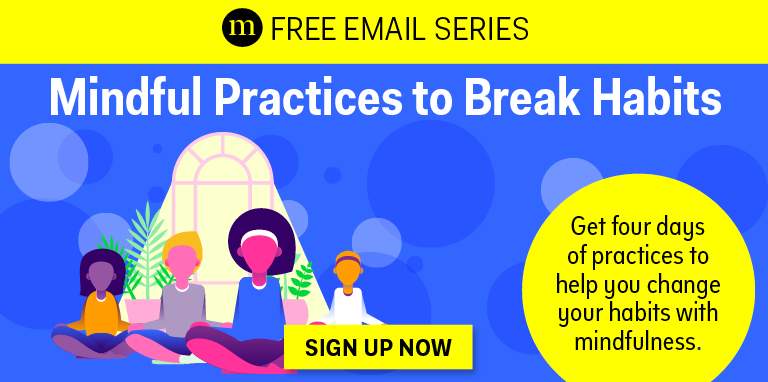
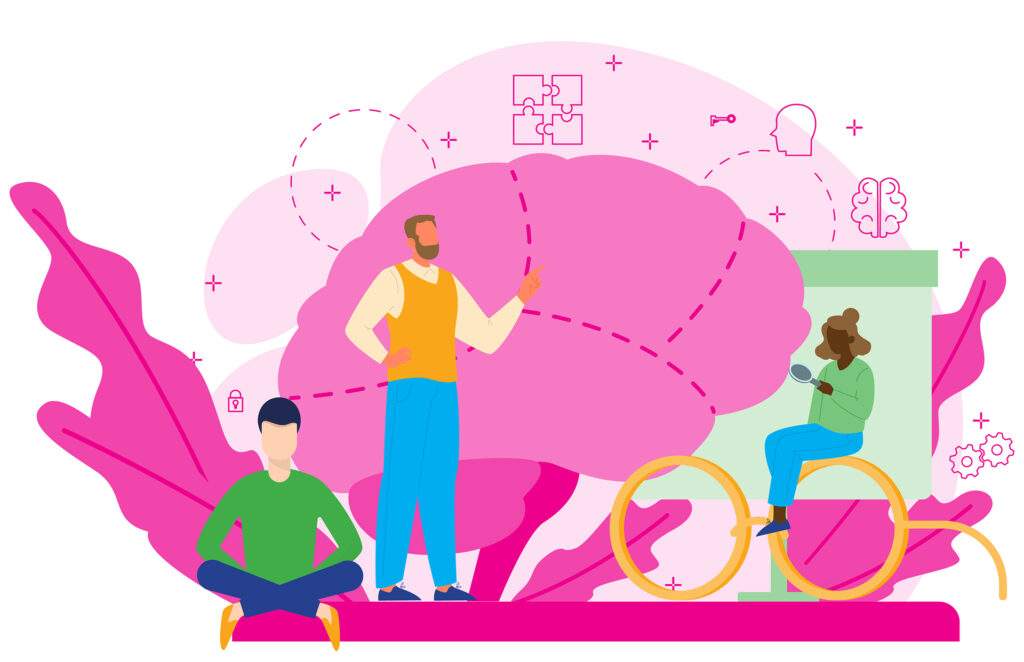
How Mindfulness Works to Change Habits
Mindfulness is the basic human ability to be fully present, aware of where we are and what we’re doing, and not overly reactive or overwhelmed by what’s going on around us. When mindfulness is present, we can see our thoughts, feelings, motivations, reactions, and responses with greater clarity and wisdom. We can pause before reacting and choose the appropriate response for the moment we are in.
It’s easy to develop patterns and habits that take us away from our present experience into rumination, worry, and fear, which, in turn, lead to stress and suffering. It’s easy to slip into overeating or over-drinking or other unhealthy behaviors without awareness, offering momentary relief but separating us from our deepest intentions.
Untangling Ourselves From Habitual Thoughts
Much of the stress, anxiety, and suffering in our lives comes from not bringing wise attention to our thoughts and beliefs, and treating them as true. We get swept up by the stories we tell ourselves. Our habit patterns play an important role in perpetuating thoughts and beliefs that lead to suffering. You might experience a loss or feel lonely or anxious and comfort yourself by eating something sweet, having a glass of wine, or zoning out in front of the TV for a few hours. That’s fine, but if you obsessively repeat the mindless behavior in response to the same difficult emotion, a habit of responding in this way develops. Your mind associates the temporary release from unpleasant feelings with the new behavior and your thinking reinforces the behavior.
Mindfulness provides skills and practices to loosen our identification with thoughts, helping us see that the content of a thought is not inherently true. With attention, thoughts can be observed and met with wisdom rather than being acted out in habitual ways. For example, when a familiar stimulus triggers the thought, some ice cream would be nice now, we can observe this as “wanting” or “wanting thought,” rather than automatically going to the freezer and scooping out a bowl of ice cream.
We can deepen our awareness of the emotions and bodily feelings that often underlie and spur our habits of thought and action. And where our thoughts have hardened into beliefs that perpetuate unhealthy habits, we can investigate these beliefs and untangle ourselves from them.
A Mindfulness Practice to Notice a Habit
Knowing how this works helps us be compassionate with ourselves. We start to understand how we tick and not take ourselves as seriously. Also, seeing how we reinforce habits can help us change them.
- Consider a nagging habit. Next time you act it out, see if you can trace each step. Can you see how the habit reinforces itself?
- Note what’s happening in your body. Can you notice the pleasant or unpleasant and not act on it? What does that urge to act feel like from moment to moment?
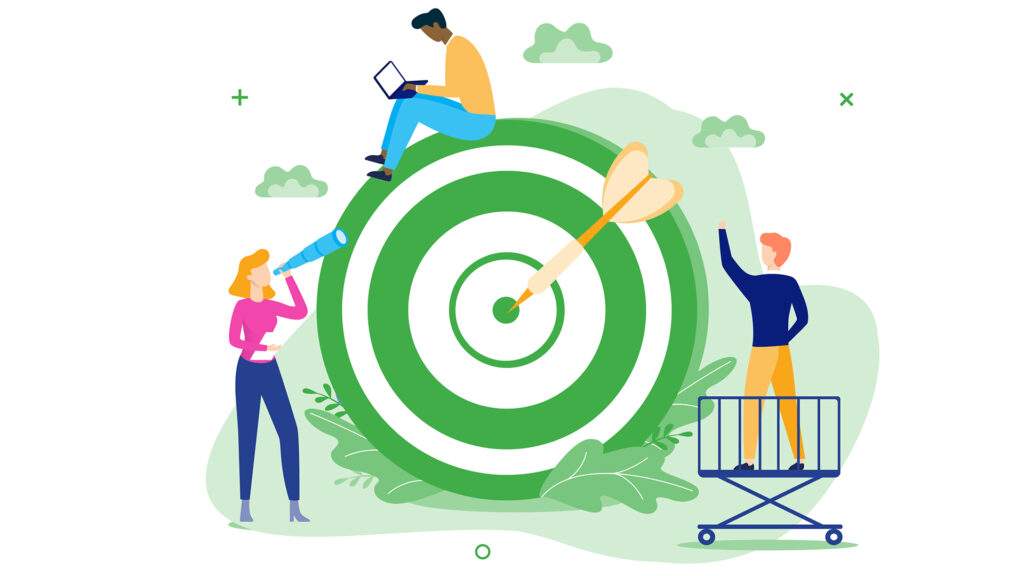
How to Change a Habit for Good
It’s important to be aware of our existing habits and patterns of thinking before changing a habit for good. Our patterns of negative thinking are often based on old, well-practiced, automatic cognitive routines (often repetitive). They are motivated by the goal of escaping or avoiding distressing feelings or problematic life situations. These unhelpful routines persist because we remain in a cognitive mode characterized by a number of features. The cofounder of Mindfulness-Based Cognitive Therapy (MBCT) Zindel Segal calls these the seven drivers of old habits of thinking.
7 Drivers of Old Habits of Thinking
- Living on “automatic pilot” (rather than with awareness and conscious choice).
- Relating to experience through thought (rather than directly sensing).
- Dwelling on and in the past and future (rather than being fully in the present moment).
- Trying to avoid, escape, or get rid of unpleasant experience (rather than approach it with interest).
- Needing things to be different from how they are (rather than allowing them to be just as they already are).
- Seeing thoughts as true and real (rather than as mental events that may or may not correspond to reality).
- Treating yourself harshly and unkindly (rather than taking care of yourself with kindness and compassion).
Train Your Mind, Change Your Behavior
Before we can change our behavior, we have to get to know our brains a bit better. We can map out an unpleasant experience in this four-step process: Situation; thought; feeling; behavior.
Situation: I have a meeting.
Thought: I don’t like this meeting.
Feeling: Anger, frustration, anxiety.
Behavior: I go to the meeting, but feel agitated and checked out the whole time. I go to the vending machine right after the meeting and get a snack. Now, I have a habit.
By recognizing our thoughts and how they impact our behavior, we can change our routine to something with a more long-term reward. We often remain in a cycle of unhealthy patterns because we believe that they are rewarding us. When we look closely, we see that many of our habits are not very rewarding. A walk is much more rewarding in the long-run than emotional eating.
Situation: I have a meeting.
Thought: I don’t like this meeting, but I know it is important for me to be there.
Feeling: Ease, contentment.
Behavior: I go to the meeting with an attitude of receptivity. I also make a plan to go for a walk after the meeting as a reward.

Daily Mindfulness Practices to Transform Habits
Mindfulness practices provide an opportunity to recognize those pesky thoughts, attitudes, and behaviors that creep up during personal and professional trials and help to mediate the effects. Recent research published in April 2016 examined the efficacy of mindfulness-based cognitive therapy (MBCT) in a study of 1258 patients with recurrent depressive symptoms. Results found that MBCT treatment is highly effective in preventing recurrent depression and curbing ongoing depressive symptoms. This is relevant news for everyone who finds themselves feeling trapped by self-defeating thoughts and behaviors.
5 Mindfulness-Based Tips and Practices to Curb Self-Defeating Habits
1) Inquire and Identify Repetitive Thoughts and Behaviors
Pay keen attention to the present moment to recognize and acknowledge any negative self-narratives, defeating attitudes, or repetitive behavioral patterns. Challenge your negative self-talk. Don’t identify with it or become it. Thoughts are not facts, they can always be changed. The same holds true for attitudes and behaviors. You are not defined by your behaviors. You have the power to change your actions at any time. Choose to empower yourself with clear decisions and commitment.
Many of us are held back by our lack of wherewithal and clear stance when it comes to habit change. While trying to change exacerbates willpower and undermines motivation because of divided efforts to both maintain the current status quo and reach for a new one, committing to change sets free new resources and activates non-linear transformational processes because we have fully released our past modus operandi and are embracing a new way of being altogether.
Try This Practice for Committing to Change:
- Write down one habit change you want to make and are willing to fully commit to.
- Then call up and meet with three people you love and respect and tell them that you are unconditionally and fully committing to the change you are declaring.
- Repeat your commitment out loud at least three times while looking into your friends’ eyes and shaking their hand with confidence.
- Observe how your nervous system responds to the experience and commitment you are making. Let the commitment be total with no back door.
- Examine the effect on your life.
2) Break Through Self-Centered Thinking
Most suffering stems from problems that are associated with a limited perception of self, a perception that holds the self as separate from the rest of the world and that generally is occupied with its survival or reification. When we break through self-centered thinking and take a fresh look at problems or situations as a whole, without personal attachment to a single viewpoint or limiting self-associations, we can begin to see solutions more clearly, without the emotional prejudice that can distort or fixate a problem.
Try This Simple Practice to Get Out of Self-Centered Thinking:
- Imagine for a moment your friend is the one going through the crisis, not yourself.
- Imagine listening to your friend explain the problem, and then imagine yourself giving feedback and offering helpful solutions.
- You are now problem solving from a caring, altruistic, and unbiased perspective, and more likely to provide helpful insights and answers to the dilemma.
- What would your advice be to your friend in a similar situation, what perspectives or solutions would you offer or propose?
3) Maintain Focus on Your Goals
Focusing on your goals will help give perspective on the situation at hand and aid in altering whatever negative self-talk presents itself. A study examining over 2,000 participants stressed that achievement goals strongly influence positive versus negative self-talk. Goals keep us focused and can emphasize ongoing improvement over perfection. Termed “mastery goals,” such improvement-focused goals release performance angst and stimulate motivation for personal growth. Remind yourself frequently of your mastery goals to reinforce positive traits that will mature toward your ideal outcomes.
4) Invite New Thought Narratives Into Your Life
Begin to replace the negative self-talk, attitudes, and behavior patterns with empowering, positive, and learning-focused narratives instead. While new thought narratives might feel inauthentic to the more limited and conditioned self-concept at first, they eventually form the ground of effective behavior change and emotional maturity. As you begin the process of taking responsibility for your own mental and emotional conditioning, you are becoming the person you want to be, not the one you are constantly struggling with.
Try This Reflection Exercise to Evaluate Your Internal Narratives:
- Take a comfortable seat and close your eyes.
- Consider your current repetitive negative thoughts. Compare them to small children sitting on a school bus.
- Acknowledge their disempowering and sabotaging comments, attitudes, and dispositions. Welcome them onto the bus ride, but be sure to not let them behind the wheel, ever. Kids don’t drive school busses well. Be kind, be compassionate, but be firm.
- Take a deep breath in while connecting to a positive skill or disposition you possess. You could also focus on a learning outcome you desire. Keep breathing while you let that skill or disposition emerge.
- Ask yourself, “if I let this more positive skill or disposition guide my life, what will it have me do?” Repeat the process until clarity about your next steps arises.
5) Bring Greater Feeling Into New Thought Narratives
Learn how to enjoy and celebrate a newly cultivated behavior or thought to make it stick through positive reinforcement of pleasurable emotions. Research from a study published in the Journal of Applied Behavioral Science asserts that employees who cultivate a positive attitude tend to engage in positive behavioral change with greater ease than employees who have a more negative psychological mindset. This is not to say that a bright smile is always appropriate, but a kind and joyful internal disposition can go a long way even during trying times.
The next time you feel yourself getting bogged down by your negative thought-narratives or self-defeating habits, follow these simple tips to navigate yourself out of routine every time. And remember: you don’t have to be your thoughts, attitudes, or habits. You are not your behavior. You always possess the capacity to change your mindset to navigate yourself clearly out of adversity. This inherent freedom comes at no cost. Mindfulness can provide you with the tools you need to reprogram your conditioning, it takes some work, but the rewards are priceless.
A Mindfulness Practice to Cultivate Awareness of Habits
- Bring awareness to the habit that you want to change and think about the situations or conditions that trigger the habit. Are there actions you can take to avoid acting out the habit? What might be an alternative, healthier choice? For example, if you frequently snack on sweets when you’re feeling anxious, uncertain, confused, or lonely, ensure that you don’t have sweets in the house. Purchase healthier foods, such as nuts or fruit, to be on hand when a wish to have a snack arises.
- When you feel an urge, work with the trigger or craving to act in a habitual way: Pay attention to the context or environment in which the habit typically arises—the place, time, people, sights, sounds, smells. When you first become aware of an urge to act, pause, take a few deep breaths and bring awareness to your internal experience. What is predominant? Is it a bodily feeling, such as tightness in the stomach or watering of the taste buds? Is it a strong emotion such as anxiety that you have responded to with comfort food in the past? Is it a combination of sensations, emotions and thoughts?
- Make a conscious choice to remain aware of your direct experience, rather than acting on the craving. Notice how the sensations, emotions, and thoughts begin, stay for a time, and pass when you meet them with kind attention.
- If you’ve brought mindfulness to a stimulus or craving that has led in the past to an unhealthy habit but you’ve resisted taking the habitual path, let yourself feel whatever comes up. Perhaps it’s a feeling of relief or release, or gratitude, or optimism. Take these feelings in. Allow yourself to experience with appreciation any bodily sensations, emotions, or thoughts.
If you acted upon the urge or stimulus in a habitual way, don’t judge or criticize yourself. Rather, meet whatever feelings come up with kindness. If self-judgment, harsh criticism, or feelings of frustration or pessimism arise, meet them with friendliness. Revisit what matters most to you and how working to abandon this unhealthy or unwanted habit supports your deepest intentions. Remember you can begin again at any moment.
A 10-Minute Mindfulness Practice to Tame Bad Habits
Tame Bad Habits—Judson Brewer
- First, find a comfortable position. Begin just by settling into a comfortable posture, whatever that posture is for you right now.
- Now, tune into body sensations. Check in with your body. What does your body feel in this moment? Are you holding tension in any places? Perhaps checking in with the feet and other touch points: the knees, the hips, our hands, our shoulders. Even this breath, breathing itself. Just being really curious: What’s alive for you right now in your body?
- Name the cravings in your mind. For the next few minutes we’ll work with cravings. Once you’re settled and anchored in this body, just bring to mind something that really gets your juices flowing, whether it’s food or something else you really like. We’re also bringing to mind those itches that we feel like we have to scratch. Many of us are in “Inbox Zero” mode, which is this constant race to keep our inboxes empty. We can bring this to mind: What does it feel like? When I opened up my computer, I had 58 new emails in the last hour. So whether it’s something pleasant, or whether it’s something unpleasant that we feel like we have to deal with, just bring that situation to mind. Check in to see what this urge to do something feels like in your body; this urge to hold onto the pleasant or the urge to make the unpleasant go away.
- Now, notice how the craving shows up in your body. As we identify where it is in the body, we can dial up the curiosity. What does it feel like? Perhaps even naming the physical sensations that are most predominant. Explore how this feeling shifts and changes as we bring this curious awareness to it. What happens simply by curiously exploring where it is? How long does this sensation last? Is one sensation replaced by another that becomes more predominant? And if we notice that the sensation is fading away that was brought up by imagining that food or the email inbox.
- Notice what it feels like now to rest in awareness in the body. Notice what it feels like to know that we can become aware of these sensations. We don’t have to let our cravings rule us, we can explore them with curiosity, moment to moment.
- Finally, explore any other urges or cravings that surface. For the next few minutes, simply rest in awareness of your body. Be on the lookout for these urges: Urges to get lost in fantasies or urges to beat ourselves up over something that might have happened earlier in the day or in the week. Just dive right in. Explore. Hold each sensation with this kind, curious awareness.
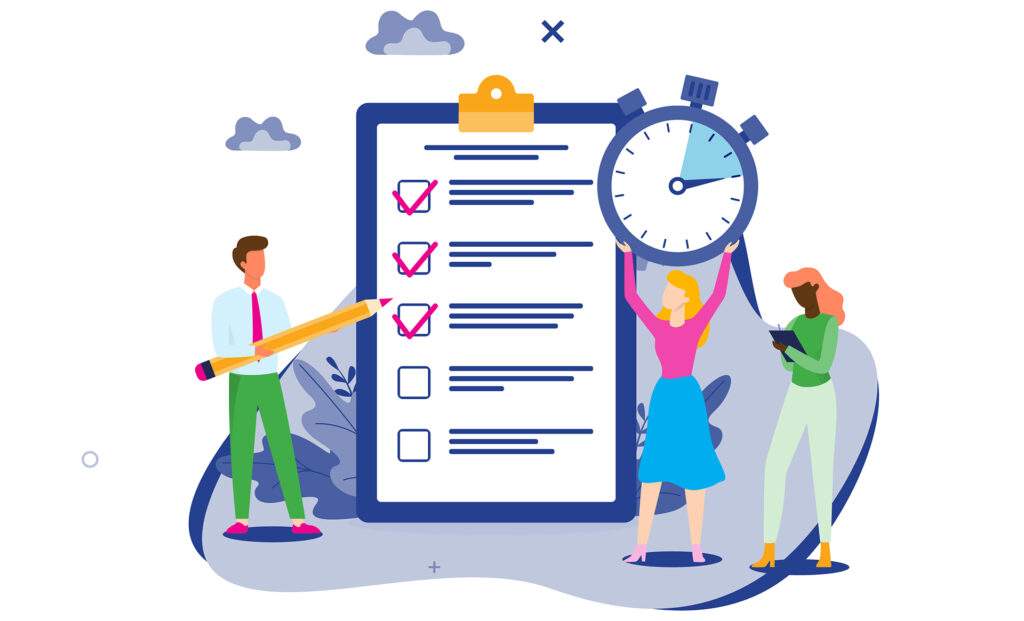
Mindfulness and Everyday Habits
Different kinds of habits have different feelings and energies associated with them, but all can be experienced, changed, or created when met with a kind, interested, and accepting awareness.
How to Make Meditation a Daily Habit
Awareness of your breath can serve as a steady basis for awareness in all you do. Explore this six-step practice to make mindfulness part of your daily routine:
- First, select a suitable place for your regular meditation. It can be wherever you can sit easily with minimal disturbance: a corner of your bedroom or any other quiet spot in your home. Place a meditation cushion or chair there for your use. Arrange what is around so that you are reminded of your meditative purpose, so that it feels like a peaceful space. Let yourself enjoy creating this space for yourself.
- Then, establish a regular time to practice that suits your schedule and temperament. If you are a morning person, experiment with a sit before breakfast. If evening fits your temperament or schedule better, try that first. Begin with sitting ten or 20 minutes at a time. Later you can sit longer or more frequently. Daily meditation can become like bathing or toothbrushing. It can bring a regular cleansing and calming to your heart and mind.
- Find a posture on the chair or cushion in which you can easily sit erect without being rigid. Let your body be firmly planted on the earth, your hands resting easily, your heart soft, your eyes closed gently. At first feel your body and consciously soften any obvious tension. Let go of any habitual thoughts or plans.
- Bring your attention to feel the sensations of your breathing. Take a few deep breaths to sense where you can feel the breath most easily, as coolness or tingling in the nostrils or throat, as movement of the chest, or rise and fall of the belly. Then let your breath be natural. Feel the sensations of your natural breathing very carefully, relaxing into each breath as you feel it, noticing how the soft sensations of breathing come and go with the changing breath.
- After a few breaths, your mind will probably wander. When you notice this, no matter how long or short a time you have been away, simply come back to the next breath. Before you return, you can mindfully acknowledge where you have gone with a soft word in the back of your mind, such as “thinking,” “wandering,” “hearing,” “itching.” After softly and silently naming to yourself where your attention has been, gently and directly return to feel the next breath. Later on in your meditation you will be able to work mindfully with all the places your mind wanders to, but for initial training, one word of acknowledgement and a simple return to breath is best.
- As you sit, let the breath change rhythms naturally, allowing it to be short, long, fast, slow, rough, or easy. Calm yourself by relaxing into the breath. When your breath becomes soft, let your attention become gentle and careful, as soft as the breath itself.
A Daily Practice to Help Make Gratitude a Habit
The key to making gratitude a habit is simply taking the time—once a day—to focus on the experience of gratitude. You might do this by writing down three things that you are grateful for, or by expressing gratitude at the beginning of a meal.
Whichever technique you use, here are a few tips to help you make the most of this practice:
- Get your friends and family involved. Have each person say what they are grateful for at the start of a meal. This will reinforce the experience and help everyone experience gratitude.
- Remember to do it. Like all well-being habits, the most difficult part of the gratitude practice is remembering to do it. We recommend two strategies. First, as mentioned above, get your family and friends involved. When you sit down to eat, each of you will help one another remember. Second, you can use the sticker technique. Put a small sticker with “Gratitude” written on it in the upper corner of your place mat. This will give you a visual reminder each time you eat at home.
- Don’t forget to rewire. It’s natural to experience gratitude in one instant and then move on to eating or whatever else you are doing in the next. Remember to introduce a subtle space after gratitude. For just 15 seconds, savor the experience.
- How to know it’s working. In a few weeks or a month, when you sit down to eat, you will express and savor your gratitudes for the day automatically. You will also start to notice the experience of gratitude becoming more frequent in the rest of your life.
- Find a cue that works for you. We strongly recommend meals because they often involve social situations in which you can share your gratitude practice with others. But if this cue doesn’t work for you, pick some other, regularly repeated daily event: waking up, going to bed, or starting your computer at the beginning of the day. The key is to keep your cue consistent.
- Go deeper. If you have mastered the practice of expressing gratitude at each meal, then feel free to begin building the advanced cue into your daily life: for instance, phone calls. Whenever you receive a phone call, rather than picking it up immediately, listen to at least two rings while thinking of one thing you are grateful for, and then answer the call as you savor the experience. You will find this practice more difficult than it sounds. When you master it, it will enable you to enter each phone conversation with a feeling of deep appreciation.
Here’s How to Make Compassion a Habit
Eric Langshur and Nate Klemp, PhD, offer an easy practice to notice, shift, and rewire our brains to turn toward compassion.
Here is an informal practice to shift your attention toward compassion each day. Like other practices, the best way to turn this into a habit is to set up a cue—an everyday reminder to shift to compassion.
Try it when you leave your house or apartment. You can also choose any number of other cues—starting your car, waiting for a bus or train, or standing in line at the store or airport. The key is to pick a moment when you are about to interact with others and it’s likely that you’ll slip out of kindness and into states like anxiety, irritation, or anger. Here’s how to do it:
Step 1: Notice
When you encounter this cue, just notice your current state. Notice any thoughts or feelings that are arising toward others. You might notice the mind’s natural tendency to view others with a negative bias.
Step 2: Shift
When you notice this absence of compassion, shift. Shifting doesn’t require that you meditate for 30 minutes. It doesn’t require that you hang up the phone or leave the meeting you are in. You can make this shift instantly in the midst of your daily life.
The best, most efficient way to shift, is by sending a simple wish toward the people you are about to encounter in your day: “May you be well.” This can be as easy as repeating this phrase in your mind and feeling your body flood with the experience of love and kindness.
Step 3: Rewire
The final step is to take a brief moment—just 15 to 30 seconds—to savor the feeling of compassion. Let this felt experience that compassion evokes in your mind and body sink in. Notice the difference between this experience of compassion and the experience of anger, irritation, or contempt. Encode this experience deep in the neural connections of the brain; allow the neurons of compassion that fire together to begin to wire together. Live in a state of kindness and compassion.
7 Habit-Changers to Shift Out of Autopilot
Boredom can sometimes be a sign that we’ve become habituated. We’re getting stuck on autopilot, and losing touch with actual experience. We can get out of autopilot by freshening up our routine, seeking out new situations and experiences, inviting a different perspective. Try one of these each day for a week and notice what happens:
- Take an unfamiliar route to work, or to a regular appointment. Change your mode of transport—if you usually drive, take the bus, or train, or walk. If you work from home, you can try changing the arrangement of your home office.
- Follow a recipe for a meal you’ve never tried, with at least one ingredient you’ve not before cooked with.
- Start a conversation with someone you’ve never really talked with: the barista at your coffee shop or someone from a different department in your company—ask them how their day is going and be prepared to listen with interest.
- Go to the cinema without checking what films are showing. Watch the first one that starts after your arrival.
- Read a different newspaper/news site to the one you’re used to—perhaps one that doesn’t confirm your usual political views.
- Join a class for a sport, activity, or hobby that you think you won’t enjoy. Keep an open mind and resolve to find out one new thing about this activity from the teacher or other participants. Can you discover what others find engaging about it?
- Turn off all Internet connections for one day. Be open to alternative means of finding out information and connecting with others and the world.
read more
Most Habit-Change Tools Fail With Anxiety—Here’s One that Works
Our automatic reactions are the result of unexamined habits, including anxiety. In his book Unwinding Anxiety, neuroscientist and psychiatrist Judson Brewer explores how mindfulness can plant the seeds for a calmer mind.
Read More
Why Does My Anxiety Keep Coming Back?
Sometimes willpower and reframing aren’t enough to break a habit. Here’s how to break the cycle.
Read More
Unwinding Your Anxiety Habit Loop
Coping with anxiety is difficult, but we can begin to untangle our anxious loops when we recognize how they show up in our daily activities.
Read More
